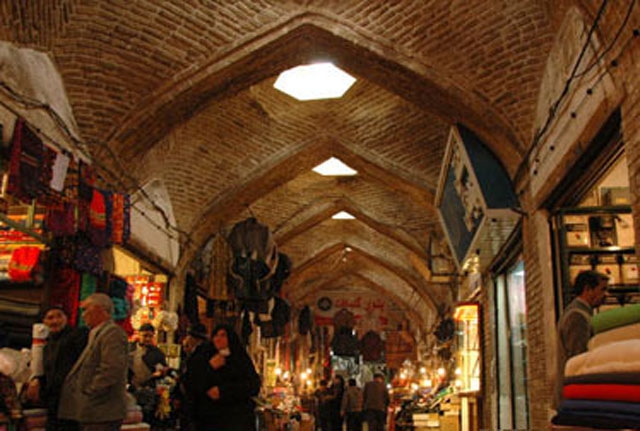The bazaar�s construction was started during the reign of Aqa Mohammad Khan Qajar in 1784 CE and completed during the reign of Fath�ali Shah in 1792 CE.
According to Tehran-based English newspaper, Iran Daily, Russian Prince Alixis Soltikov visited Zanjan Bazaar in 1795 CE.
Zanjan Bazaar is an important economic potential for Zanjan. Although local people frequent the place, it is still unknown to non-native travelers and tourists.
Saeed Omidi, a member of Zanjan City Council, said the bazaar�s architectural features constitute the city�s identity, therefore the bazaar should be publicized by officials.
Omidi called for installing signboards, removing parking problems, organizing electricity installations and pavements, and cleaning up the bazaar. He added that these should be undertaken jointly by Iran�s Cultural Heritage, Handicrafts and Tourism Organization (ICHHTO), Zanjan Municipality and bazaar shopkeepers.
Zanjan Bazaar, as an architecturally well-designed complex, has a main row of shops facing each other and several side streets. The bazaar includes market-places, vestibules, inns, caravanserais, storehouses, mosques and Turkish baths.
This enormous commercial complex is a blend of beauty and usefulness, enclosing porticos, porches, arches and columns. The complex begins from Tirchilar Square, crosses the Ferdowsi Street and ends in the southern Sa�di Street.
Zanjan Bazaar has 940 shops. It consists of two parts, namely Bazaar-e Bala (upper bazaar) and Bazaar-e Paieen (lower bazaar), which are divided into different sections by professions and commodities. For example, sellers of shoes, household appliances and garments are grouped together.
The upper bazaar has been divided into eight sections (each to do with a specific commodity) such as jewelry, textiles, fruits, etc.
As time passed and new technologies and modern tools emerged, some of the professions became outdated.
Certain occupations have been forgotten and the elderly have a faint memory of earlier craftsmen. Coppersmiths, saddle-makers and box-makers are no longer active in the bazaar.
Some of the vacant shops are waiting for new traders.
Serai Malek and Serai Golshan are caravansaries of this bazaar, which were renovated in 1924 CE.
Two mosques, namely Aqa Sheikh Fayyaz Mosque and Mirza Mosque, are located inside the bazaar complex. Two public baths also exist here by the names of Bolouri and Moini.
The upper section includes bazaars named Qeysarieh, Hojjatoleslam, Imamzadeh and Abdolali Beig.
Chehel-Sotoun Mosque, Aqa Seyyed Fath�ollah Mosque, Jame� Mosque, Mallar Mosque and Hojjatoleslam Mosque are located here.
Due to changes in weather conditions, the roof of Zanjan Bazaar has been constructed in a way that climatic variations do not overshadow its internal ambiance.
By IRNA
# Tags











